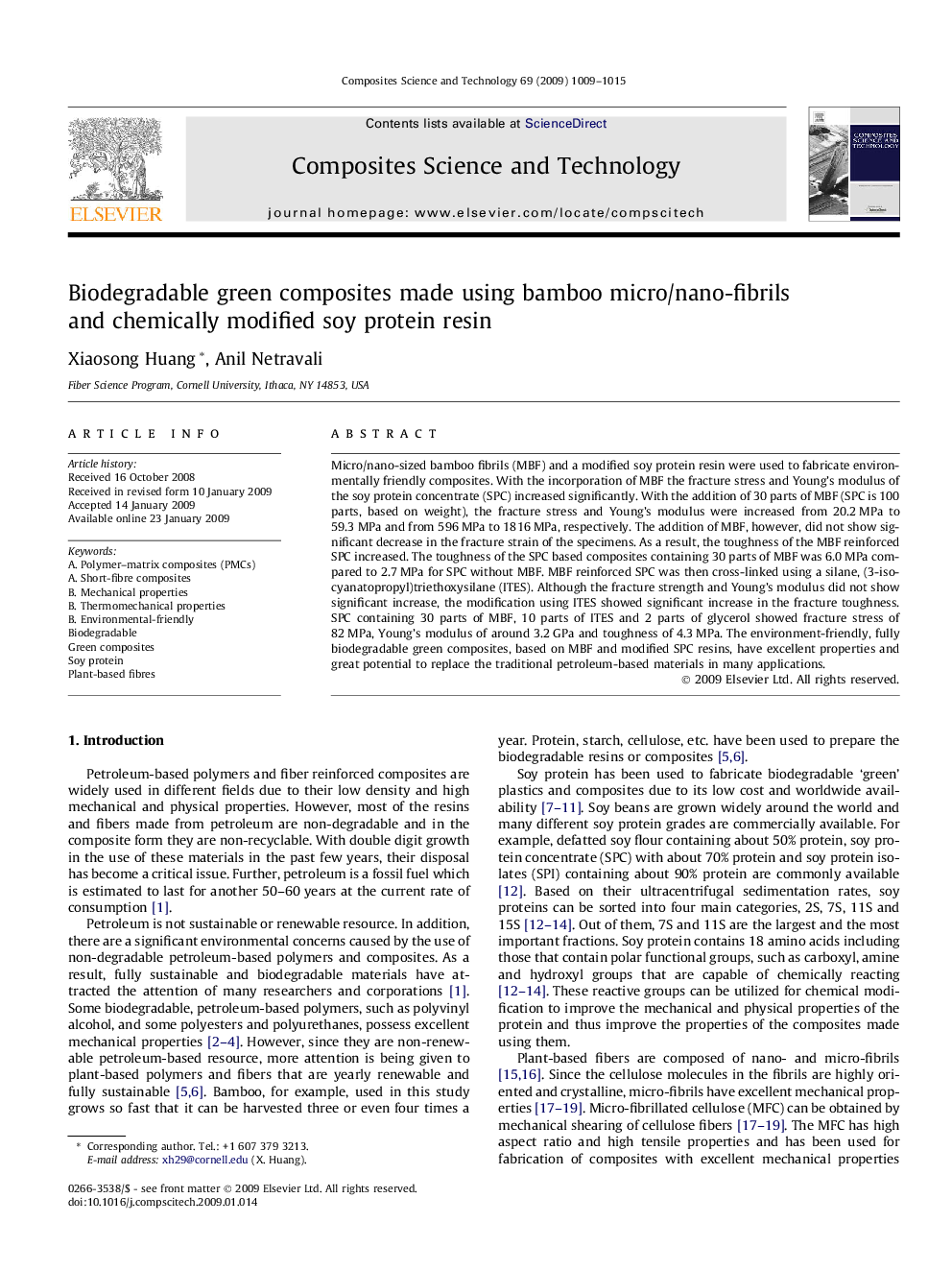| Article ID | Journal | Published Year | Pages | File Type |
|---|---|---|---|---|
| 821843 | Composites Science and Technology | 2009 | 7 Pages |
Micro/nano-sized bamboo fibrils (MBF) and a modified soy protein resin were used to fabricate environmentally friendly composites. With the incorporation of MBF the fracture stress and Young’s modulus of the soy protein concentrate (SPC) increased significantly. With the addition of 30 parts of MBF (SPC is 100 parts, based on weight), the fracture stress and Young’s modulus were increased from 20.2 MPa to 59.3 MPa and from 596 MPa to 1816 MPa, respectively. The addition of MBF, however, did not show significant decrease in the fracture strain of the specimens. As a result, the toughness of the MBF reinforced SPC increased. The toughness of the SPC based composites containing 30 parts of MBF was 6.0 MPa compared to 2.7 MPa for SPC without MBF. MBF reinforced SPC was then cross-linked using a silane, (3-isocyanatopropyl)triethoxysilane (ITES). Although the fracture strength and Young’s modulus did not show significant increase, the modification using ITES showed significant increase in the fracture toughness. SPC containing 30 parts of MBF, 10 parts of ITES and 2 parts of glycerol showed fracture stress of 82 MPa, Young’s modulus of around 3.2 GPa and toughness of 4.3 MPa. The environment-friendly, fully biodegradable green composites, based on MBF and modified SPC resins, have excellent properties and great potential to replace the traditional petroleum-based materials in many applications.
